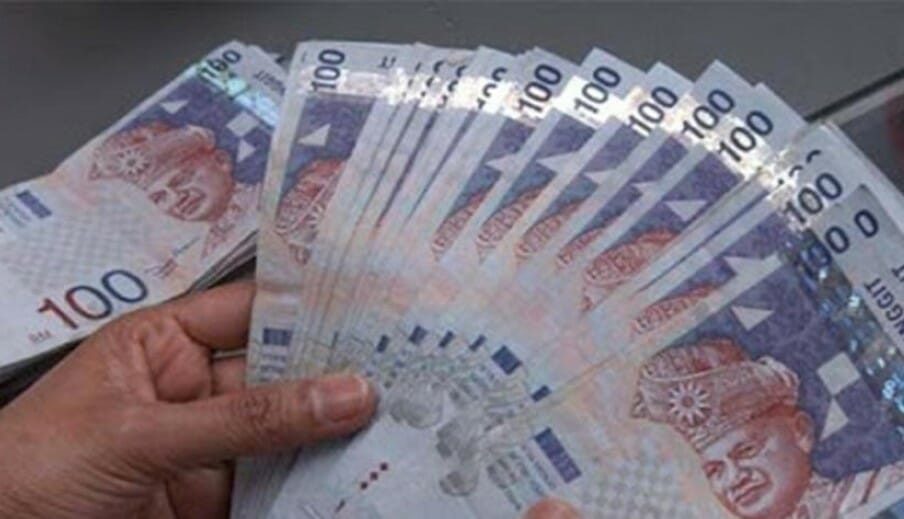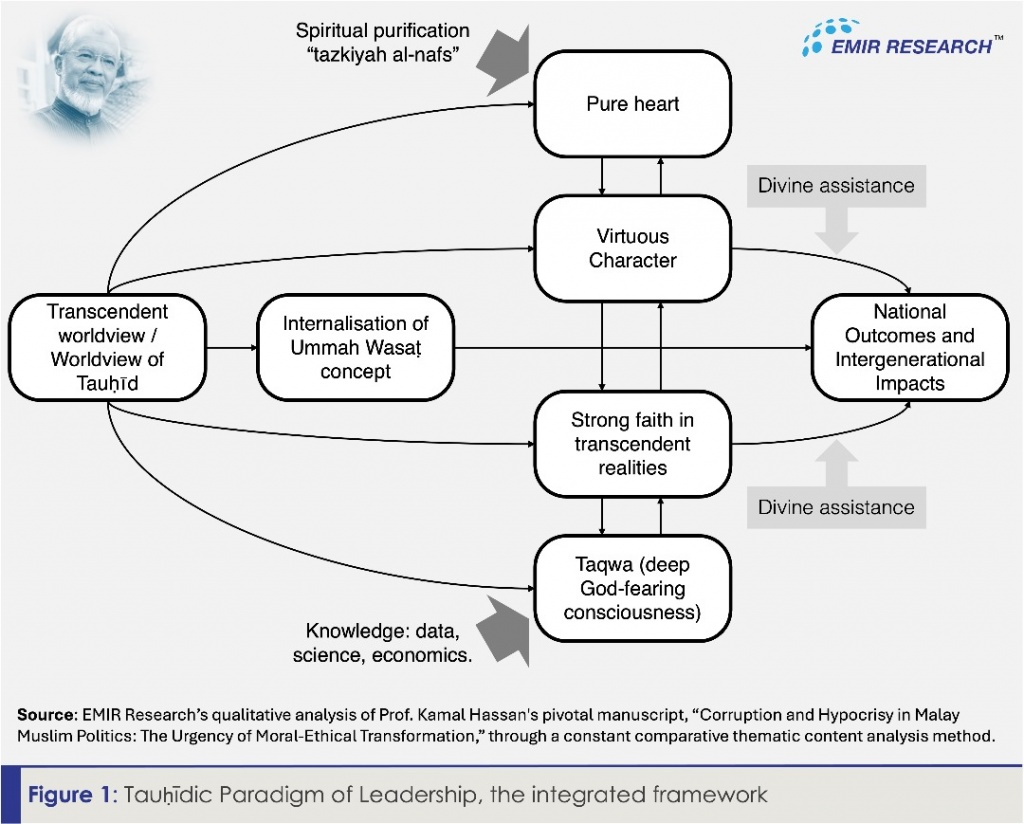
Published by BusinessToday & AstroAwani, image by BusinessToday.
Malaysians now fear that our currency may hit the RM5 against the USD in the near future. We’re anxious that a weaker RM (than before) means weaker purchasing power driving a higher cost of living and inflationary pressures.
Despite the Consumer Price Index (CPI) which is the headline inflation in Malaysia recording a very low of 1.5% in January 2024 – basically unchanged since November 2023 – with core inflation at 1.8%, the ground reality is somewhat different for the many.
Malaysia Madani must continue to reassure the rakyat that it treats their concerns regarding the RM seriously. As the issuer of the RM currency, the government still retains a critical measure of influence over the situation even though the external factors are “beyond” its control.
As highlighted in EMIR research article, “A simulated or guided peg – neither soft nor hard” (August 4, 2023), money is the creation of the State. Therefore, the State possesses the levers at its disposal to determine and influence the rules of the game in the market or at least cushion and mitigate any impact and fallout.
The predicament of the RM at current levels could be traced all the way back to 1998 (during the Asian Financial Crisis/AFC) when it’s fixed/pegged to the base rate of RM3.80. Whilst pegging is no longer the right solution given the circumstances (i.e., a non-fully internationalised RM to protect against speculative attacks and no “downward spiral”), the base rate reminds us of the initial role that the State played.
Analogously, in parallel fashion, the market forces that dampened the RM beginning in 2013 and later 2015 were due to the Federal Reserve’s quantitative tightening/QT (i.e., bond-selling) programme that’s first announced under Ben Bernanke and implemented by Janet Yellen then. The “taper tantrum” (i.e., impact of the policy announcement of QT) in 2013 pushed up US Treasury (UST) yields for long-term bonds (e.g., 10-year securities spiking by 100 basis points or 1%).
In short, the actions of the US (State actor) affected demand for its financial assets internationally, including Malaysia, resulting in outflows from emerging markets (EMs). The RM declined by 10% set against exceptionally high levels of foreign ownership or holdings of our Malaysian Government Securities (MGS) bonds which was at a staggering 50% in turn heightening the risk of a sudden outflow on the currency (“Wonder why ringgit’s getting crushed?”, CNBC, August 22, 2013).
In 2015, the global oil prices crashed by about 50% which saw the RM plummeted by close to 20% in value. The outbreak of the 1MDB scandal in 2015 compounded the downward pressure on the RM.
That said, the bottom line of the same scenario of the increase in the federal funds rate (FFR) is being replayed in 2022, 2023 and now 2024.
Dollar volatility (in measuring the standard deviation or variance of the currency pair price movements – whereby the USD surged against most of its counterparts) was high in 2022 until first half of year (1H) 2023.
Notable indicators/proxies of dollar volatility loomed large also on the back of the Overnight Reverse Repo Facility (ON RRP) – in addition to the Interest on Excess Reserves (IOER) – where the Federal Reserve effectively withdrew excess liquidity from the wider financial system (i.e., not just the banks but also money market funds, backstop agencies, etc.) by setting the floor rate for the FFR as part of the monetary policy toolbox/toolkit to control short-term interest rates. The combined effects of QT meant that demand “outpaced” supply for the USD in the domestic (US) financial markets and, by extension, the foreign exchange (forex) markets.
Hence, (short of imposing full capital controls and perhaps going beyond the period imposed during the AFC of 1998 that’s limited to one year only), the RM’s depreciation is due to external factors that’re beyond the government’s control, as the Prime Minister has rightly said. Moreover, as reminded by the Governor of Bank Negara Malaysia (BNM) Datuk Abdul Rasheed Ghaffour, and echoed by the CEO of EPF Ahmad Zulqarnain Onn, the RM remains undervalued.
Well-known veteran economic analyst Pankaj C Kumar in “Don’t fight the Fed” (The Star, February 24, 2024) has highlighted that there’s a very strong correlation between the spread (i.e. the yield differentials) between the long-term sovereign papers of the US and Malaysia with their exchange rate (the chart presented in the article showed at least a correlation coefficient of 83%).
In essence, the current situation can be traced back to the Federal Reserve’s overall monetary tightening stance in March 2022.
At the same time, former member of the Monetary Policy Committee (MPC) of BNM and senior economist Lee Heng Guie has pointed out that the presence of other factors which exert downward pressure (e.g., balance of payment/BOP in our food imports) and affect market psychology (government debt and deficit) don’t alter but simply reinforces the exchange rate pressures (“The ringgit: What we need to understand”, The Star, July 18, 2023). Lee also stressed that, “[a] flexible exchange rate is prone to misalignment with its underlying fundamentals”.
When looking at the currency misalignment within the euro area as outside scenario, a prime example emerges between Germany (undervalued – as exporter) and Greece (overvalued – as importer) whereby the discrepancy is measured by TARGET2 – the real-time gross settlement system/RTGS of the Eurosystem comprising the European Central Bank/ECB and the national central banks/NCBs and, by extension, the euro interbank market of which the commercial banks are also deemed as direct participants.
In addition to the policy measures recommended by EMIR Research in “A simulated or guided peg – neither soft nor hard” (which include offering our bond market at a special exchange rate, arbitraging on our currency swap lines, etc.), and “Sustainable structural reforms the way forward” (August 8, 2022 – progressively lowering the Overnight Policy Rate/OPR that’d allow for the international traders to short-sell our bonds), among others, we call on the government to ensure that fiscal policy continues to be at the forefront in addressing the RM’s weakness.
As added measures, the Kuala Lumpur Interbank Foreign Exchange Market which in effect serves as the onshore forex market for the RM should step up and help support the RM via both the ringgit forex rates and the USD-MYR reference rate based on the dynamics of the daily weighted average volume (which represents a shift from the traditional rate quotation submissions by participating banks) for the spot (over-the-counter/OTC) trade/transactions. Bank Negara and the Financial Markets Association of Malaysia (FMAM) as joint-supervisors of the onshore forex market should ensure discipline and “fair play” (i.e., lack or absence of inherent bias, e.g., in reference to a possible conspiracy theory/”high-octane” speculation of a predisposition towards a higher forex rate or weaker RM, directly and indirectly, whereby the resistance level can serve as the new support level in technical analysis under the pretext of pushing for further OPR increases) among players.
Just late last year, Bank Negara Deputy Governor Adnan Zaylani was quoted as saying that, “[m]arket players and participants must avoid contributing to the downward pressure on the [RM] and instead should stay composed and play a stabilising role in riding out the current highly dynamic situation” (“Market players, participants must play a role in stabilising ringgit – BNM”, Bernama, November 25, 2023).
That the State is not entirely beholden to market forces (as EMIR Research has consistently highlighted) is further amply illustrated also in the warning against non-deliverable forwards (NDFs) based in Singapore and the use of reference rates approved by Bank Negara in agreement with the FMAM (on behalf of its members as participating institutions).
Ultimately, given the relative stature of the RM (compared to the USD), fiscal policy remains best poised (compared to monetary policy) as the most effective macro-economic tool to mitigate the impact and fallout from the RM’s depreciation as it directly impinges on the cost of living and affect inflationary pressures.
Towards that end, the government must be prepared to shift gear and change course as regards its fiscal consolidation plan whilst still maintaining full alignment with the Public Finance and Fiscal Responsibility Act (2023) – which eminently incorporates the Input-Output-Outcome-Impact (IOOI) model advocated by EMIR Research all these while for which we’re grateful – especially as embodied by Section 8 (Fiscal objectives and quantified values) as well as including not least Section 16 (Formulation of borrowing and debt management policy) of which promoting “the development and efficient function of the domestic financial market” (as denominated in the RM) is also pertinent (for maintaining our attraction to the inflow of foreign funds).
Contrary to certain quarters, deficit spending doesn’t automatically result in currency depreciation which is dependent on the exchange rate. Currency depreciation, especially under accelerated/runaway conditions, occurs when deficit spending is used to purchase foreign currencies (e.g., principally the USD) to finance the (over) dependence on imports as export earnings are insufficient and depleting due to the need to service debt repayment obligations together with extremely low tax collections as has been the tragic case of Sri Lanka. Playing by the International Monetary Fund (IMF)’s rulebook of conditionalities and structural adjustments is set to only worsen the situation for the island republic.
Deficit spending should entail the modification of the implementation of the sales and services tax (SST) that’s been increased from 6% to 8% and which came into effect on March 1, 2024.
The SST in its current form shouldn’t be used as a simulated or indirect “substitute” for the goods and services tax (GST) – as part of the government’s efforts to increase its revenue and tax intake – at the expense of burdening the rakyat.
Increasing our tax-to-gross domestic product (GDP) ratio from 12% which is among the lowest in the region should be based on a more progressive structure, i.e., in the form of wealth-based taxes (e.g., inheritance tax which can serve as a hypothecated tax towards social care set against the context of an increasingly ageing population).
Whilst the government is to be commended for exempting water bills from the SST, electricity will still be subject to 8% surcharge for usage of 600kWh per month. Although 85% of households are exempted, businesses and factories will be affected (“Reconsider service tax hike, govt urged”, The Star, February 29, 2024). Needless to say, the increase in overall costs for the small-and-medium sized enterprises (SMEs) who’re already experiencing thin margins are expected to be passed on to consumers.
Instead, the government should expand its targeted subsidy mechanisms (intra and inter/vertically and horizontally, i.e., within pre-existing aid programmes such as cash transfers as embodied by the Sumbangan Tunai Rahmah/STR alongside creating news one under the broad auspices of the Payung Rahmah initiative, respectively).
Previously, EMIR Research has called on the government to establish an Inflation Stabilisation Fund using/deploying Bank Negara’s forex holdings of the USD to ramp up our food security initiatives throughout the entire supply chain.
Perhaps part of the Fund could be channelled towards our importers (such as the approved permit/AP holders) too as they continue to be affected by the exchange rate pass through (ERPT) shocks by allowing them to purchase USD at a favourable (i.e., lower than the forex market) rate to cushion the impact.
Lastly but not least, for the long-term (especially also in view of our ageing population), we need to start thinking about establishing our very own sovereign wealth fund (SWF), preferably two, to accumulate the reserves that’ll help to promote the status/stature of the RM and thereby exert upward pressure (thus reversing the negative impact of the 1MDB, to be sure self-styled as a “strategic development company” rather than SWF as is popularly conceived) and simultaneously mitigating any impact from a downward pressure.
Jason Loh Seong Wei is Head of Social, Law & Human Rights at EMIR Research, an independent think tank focussed on strategic policy recommendations based on rigorous research.

